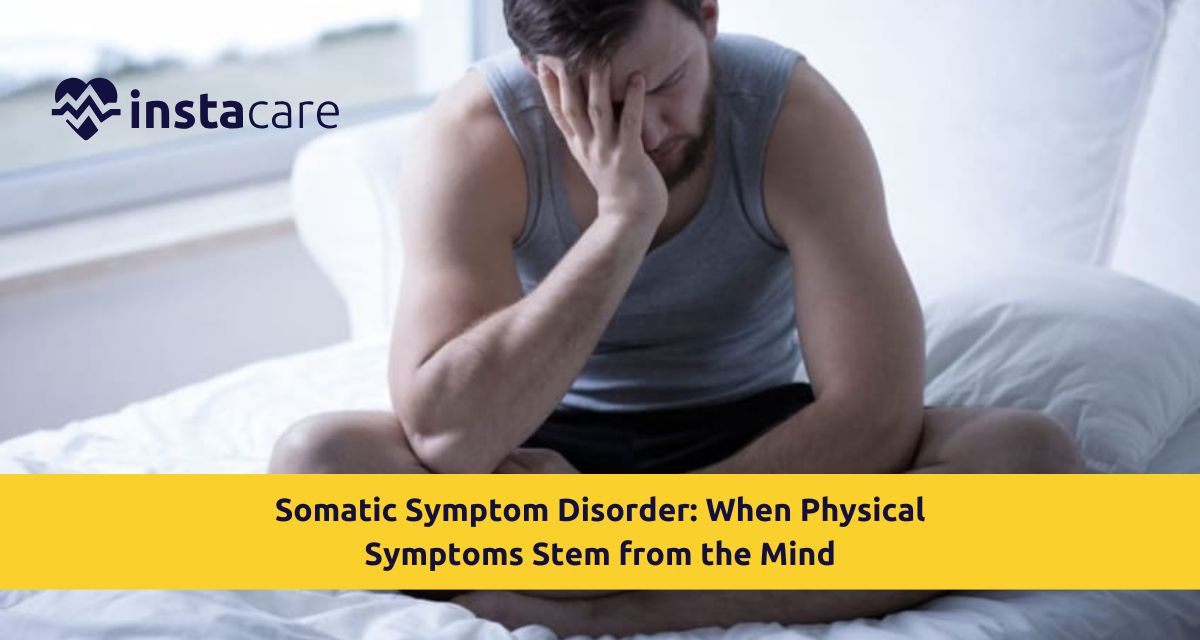What Is Somatic Symptom Disorder?
Common Physical Symptoms
- Pain: Headaches, back, joint, or stomach pain in spite of returning with normal exams. Pain is the most frequent symptom of SSD.
- Gastrointestinal Disturbances: Nausea, bloating, diarrhea, or constipation in the absence of gastrointestinal distress.
- Neurological Complaints: Dizziness, numbness, weakness, tingling, or coordination issues.
- Cardiovascular Symptoms: Palpitation, chest pain, or shortness of breath in spite of normal heart function tests.
- Fatigue: Rigid exhaustion that is not alleviated by rest and cannot be explained by medical illness.
Emotional and Behavioral Signs
- Excessive Health Anxiety: Chronic worry about symptoms and what they could possibly be indicating, constantly anticipating acute underlying sickness in the face of medical reassurance.
- Hypervigilance: Excessive monitoring of body sensations, interpreting normal reactions as abnormal indicators of disease.
- Doctor Shopping: Recurrent doctor changing for verification or new diagnosis, frequent visits to the doctor several times a week, typically for tests and interventions.
- Impaired Functioning: Inability to sustain work, relationships, or activities due to being fixated on symptoms.
Causes and Risk Factors
- Psychological Factors: Increased susceptibility due to trauma, abuse, or neglect. Patients with dysphoria and associated verbal affect expression can subconsciously express distress through somatic symptoms.
- Biological Considerations: Sensitization of pain and body feeling hypersensitivity is possible to be under genetic control. Brain range of variability in processing somatic sensation has been postulated in certain research studies.
- Conditioned Behavior: Physically ill children in families where physical illness is mastered but not emotional needs learn to communicate distress somatically.
- Chronic Stress: Chronic stress is able to disrupt the body's coping repertoire for stress, and that can be a part of the somatic experience.
How Somatic Symptom Disorder Is Diagnosed?
- Have one or more annoying physical symptoms
- Excessive symptom, concern about, or fixation on symptoms
- Deterioration of the symptoms for more than six months
Treatment Options
- Cognitive Behavioral Therapy: Cognitive behavioral therapy for somatic symptom disorder is the optimum somatic symptom disorder therapy. CBT identifies and re-maps thinking processes that connect body feeling with catastrophic meaning and provides coping techniques in symptom management with minimal use of health care.
- Mindfulness-Based Therapies: Mindfulness therapies enable the patient to notice body feeling non-judgmentally, reducing anxiety and over-reacting on symptoms.
- Medications: No medication removes SSD directly, but antidepressants, i.e., SSRIs, remove underlying depression and anxiety exacerbating symptoms.
- Stress Management: Progressive muscle relaxation, deep breathing, and biofeedback reduce physiological arousal strengthening symptoms.
- Regular Primary Care: One stable provider avoids doctor shopping and facilitates coordinated medical treatment.
Living with Somatic Symptom Disorder
- Establish Routine: Maintain consistent sleeping habits, exercise habits, and day routines despite symptoms to prevent isolation.
- Reduce Symptom Checking: Refrain from excessive symptom checking or reassurance via internet search or physician over-questioning.
- Establish Healthy Coping: Replace symptom behavior with stress reduction, hobby, and social support.
- Practice Self-Compassion: Work in the presence of symptoms without cocooning sickness as your new identity.
- Stay Engaged: Keep working, socially active, and managing symptoms, building tolerance for unpleasants.
Supporting a Loved One with SSD
- Validate Without Reinforcing: Identify symptoms as being present without reinforcing complaints about the body. Move toward middle ground between support of activity and medication compliance and empathy.
- Encourage Treatment: Encourage treatment and therapy appointment without controlling.
- Avoid Enabling: Avoid enabling recurrent medical seeking and symptom management of family life.
- Educate Yourself: Knowledge of SSD allows the individual to know how to respond accordingly and stay patient in recovery.
- Set Boundaries: It is draining to take care of an individual with SSD. Take care of your self through self-preservation.
Read More: How Do Substance Use Disorders Occur?
When to Seek Professional Help
- Physical symptoms don't remit after appropriate medical workup
- Interfere with work, social role, or activities of daily living in a significant way
- Consume a significant amount of time concerning themselves about or undergoing medical treatment for the symptom
- The symptom is probably an artifact of psychological problems as indicated by several physicians
- Physical symptoms occur when the patient is depressed or anxious
Conclusion

